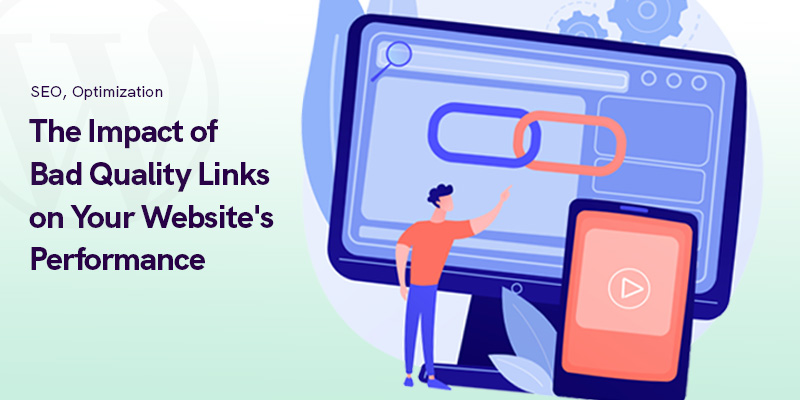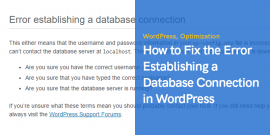
The Impact of Bad Quality Links on Your Website’s Performance
Having links that lead from your site to others and vice versa can be great for your site and your business.
Of course, you want your business to grow, and the whole point of marketing is to spread the word about your business to the public and your potential target audience.
Links can be one of the best ways to do this. If you have links on your site that lead to other sites, they will appear both on your page, and also on SERPs.
Checking website ranking necessities is essential for monitoring and optimizing your SERP (Search Engine Results Page) performance.
Likewise, your backlinks (links leading from other sites to yours) will help your business in multiple ways:
They will lend you credibility with the public, because other people’s deciding to include you indicates that they have enough faith in your business to want to be connected to you.
Also, they can help your site ranking because search engine crawlers rank sites that receive high-quality backlinks more highly.
Plus, you will get a greater number of mentions on SERPs as people’s searches for your products or services like yours will lead to your site, both directly and indirectly through the sites from which you get backlinks.
Beware of the Impact: How Bad Quality Links Can Harm Your Website
When it comes to links, not all are created equal. It can be challenging to distinguish between high-quality and low-quality links.
To tackle this, consider using a reliable tool like a broken link checker that helps assess the nature of your links.
So, what defines a good or bad quality link?
Several factors come into play. First and foremost, you want to ensure that the sites you link to (or those linking to yours) carry sufficient authority.
These are reputable and established sites that hold value in the eyes of both the public and search engines.
It's crucial to verify that your outbound links are active and free from malware. Even reputable businesses can shut down, and anyone can fall victim to a malware attack.
Additionally, you need to be cautious of low-quality sites or those leading to inappropriate content like adult or gambling themes.
Regularly monitoring and managing your links is essential to maintain a healthy link profile.
How can you differentiate between good and bad links?
At first glance, it may not be obvious which links are beneficial or detrimental, especially with backlinks. While it's easy to review the links you've included, you may not know which sites are linking to yours.
Employing a professional tool can help determine the quality and impact of these inbound links on your site.
What can you do about bad links?
If you discover undesirable backlinks leading to your site, several actions can be taken. In some cases, you can reach out to the site owner and request the removal of the link.
Google offers a “disavowal” mechanism through its support page, providing step-by-step instructions on how to remove harmful backlinks.
Alternatively, professional tools can assist in managing this process efficiently.
Remember, regular link maintenance is essential to keeping your site in shape. Bad links can emerge at any time, so establishing a checking schedule ensures your site remains in optimal condition.
Don't forget to seek out and include high-quality links as well. If there's a company or group you'd like to connect with, reach out and explore the possibility of adding mutually beneficial links.
You could offer them a service (if you're a service provider) or provide product samples to demonstrate quality.
Experiment with incentives and gauge the response—someone might agree to link to your site.
Assess Other Site Features
While links are crucial, they're just one aspect of your site's overall performance. Stay up-to-date on keywords, content interaction and optimization, and other vital elements through regular site auditing.
Keeping a holistic approach ensures your website remains in top shape.
Conclusion
In the world of website optimization, understanding the impact of bad quality links is crucial. By utilizing tools like broken link checkers and staying vigilant with regular link maintenance, you can safeguard your website's reputation and performance.
Distinguishing between good and bad links, addressing undesirable backlinks, and actively seeking high-quality connections contribute to a healthy link profile.
Remember to consider other site features through regular audits, ensuring your website remains optimized and competitive in the digital landscape.
By taking proactive measures, you can protect your site from the negative consequences of bad quality links and pave the way for sustainable online success.
FAQs
Q1. How can I determine if a link is of good or bad quality?
Answer: Using professional tools like broken link checkers can help analyze the nature and quality of your links.
Q2. What should I do if I discover bad backlinks leading to my site?
Answer: Reach out to the site owner and request the removal of the undesirable link. Alternatively, employ the “disavowal” mechanism provided by Google.
Q3. How often should I check and manage my website's links?
Answer: Regular link maintenance is recommended to ensure your site remains in good shape. Establish a checking schedule to stay proactive.
Q4. Can I approach other websites to request mutually beneficial link placements?
Answer: Yes, reaching out to companies or groups and offering incentives like services or product samples can potentially lead to beneficial link placements.
Q5. Are links the only factor to consider for website optimization?
Answer: No, while links are crucial, it's important to regularly audit and optimize other aspects of your site, such as keywords and content, for overall performance improvement.
Recommended Posts

Boost Event Visibility with MEC’s Top SEO Features in 2025
February 3, 2025



